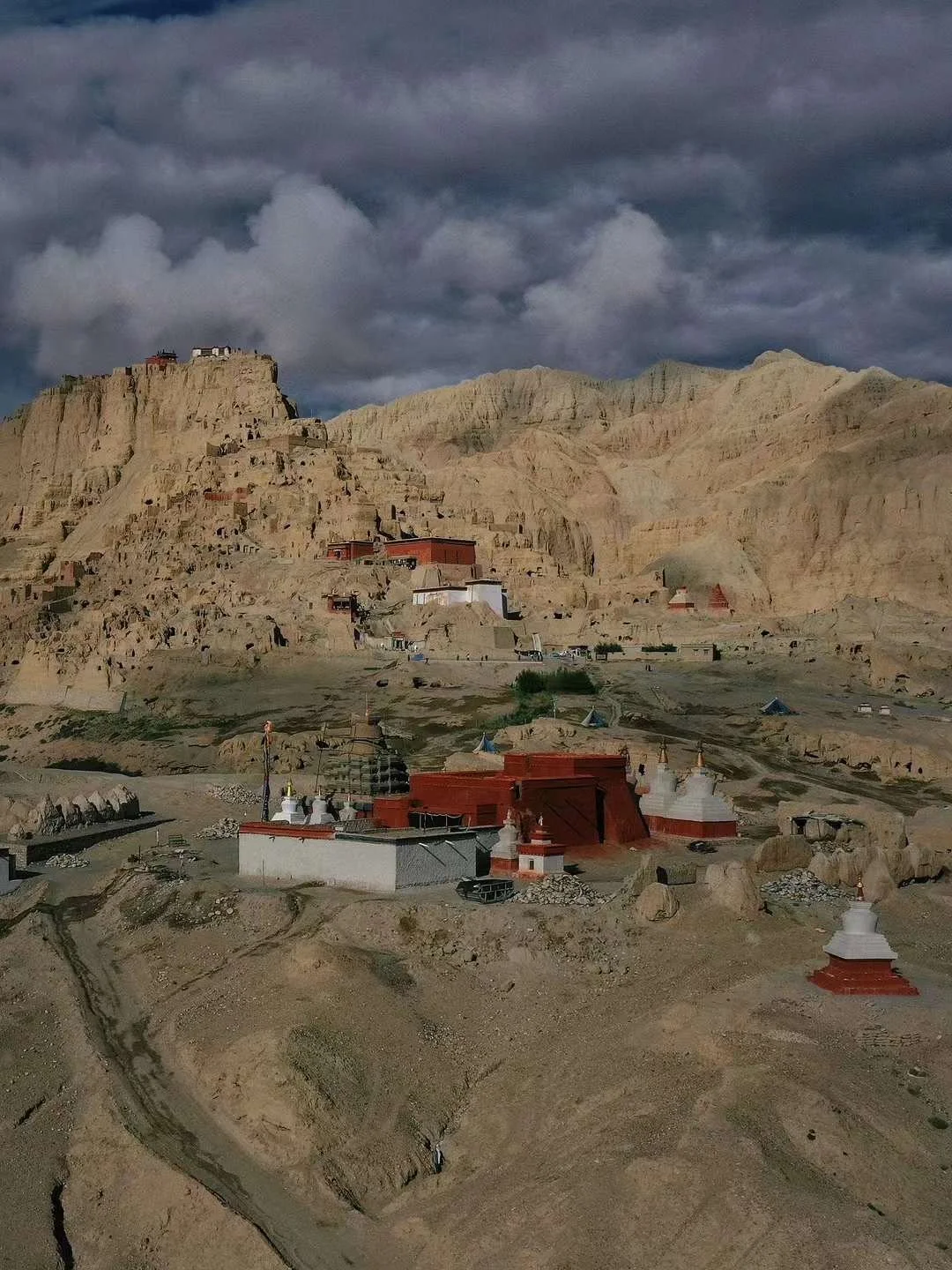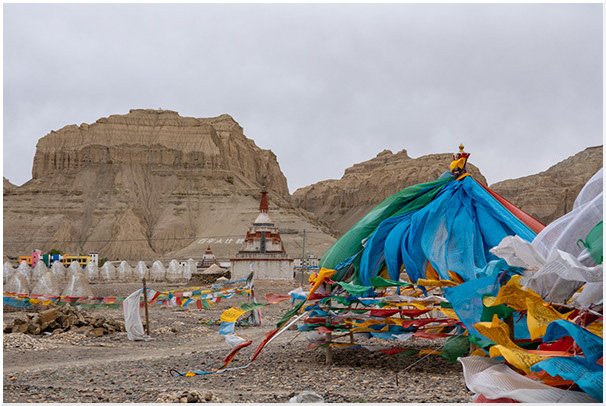
Ancient Guge, Far Western Tibet
Guge in Far Western Tibetan is a sparsely populated region called Nari. It is defined by high deserts, pastures, and numerous salt lakes. The average elevation is 13,000 ft (4,000 m). The largest portion of the topography consists of river and lake sediments that were never petrified, only condensed, so they’re very soft. Historically, it was an important center for trade and cultural exchange between Tibet, India, and Central Asia. Its proximity to the Himalayas also contributed to its isolation and autonomy, allowing it to develop its own unique cultural identity.
Following the disintegration of the Tibetan Empire in the mid-9th century with the assassination of the anti-Buddhist king, Langdharma, Guge came to be ruled by his descendants and eventually by the famous king, Yeshe O, who was keen on a conservative reformation of Buddhism. This led to many changed and to a focus on Buddha Vairochana. In 986, he declared the religious and secular to be separate. Seeking a return to original sources. he sent envoys to Kashmir, the center of Buddhism in India. Tholing was his capital and it is regarded as the center of the Second Diffusion of Buddhism.
Guge experienced a second Golden Age in the 14th century. The new seat of the royal regency was Tsaparang, downstream from Tholing. 1841-42, a Sikh invasion greatly damaged Tholing, but it was soon revived and became one of the most important religious sites in all of Tibet, Heaven of the World. In the 17th century, internal conflicts, invasions, and changes in trade routes contributed to its demise. In the 1930s, the Italian explorer Guiseppe Tucci “discovered” and photographed Guge. The Cultural Revolution (1966-1976) destroyed over ninety percent of the temples and their statues and scriptures. Governmental restoration has been initiated in an effort to protect this cultural heritage. Today, with an area of 720,000 sq. m., one can see houses, ancient meditation caves, monasteries, stupas, huge stone sculptures, wooden carvings, and giant murals. The meaning of the name "Guge" is uncertain.
A short visit to Guge will take two full days and will consist of exploring the ruins and temple reconstructions. Guge is a prime destination for geology, religious art, and photography. It is usually visited after Kailash (245 km), and then, returning eastward, there is an overnight on the north shore of Laka Manasarovar.



